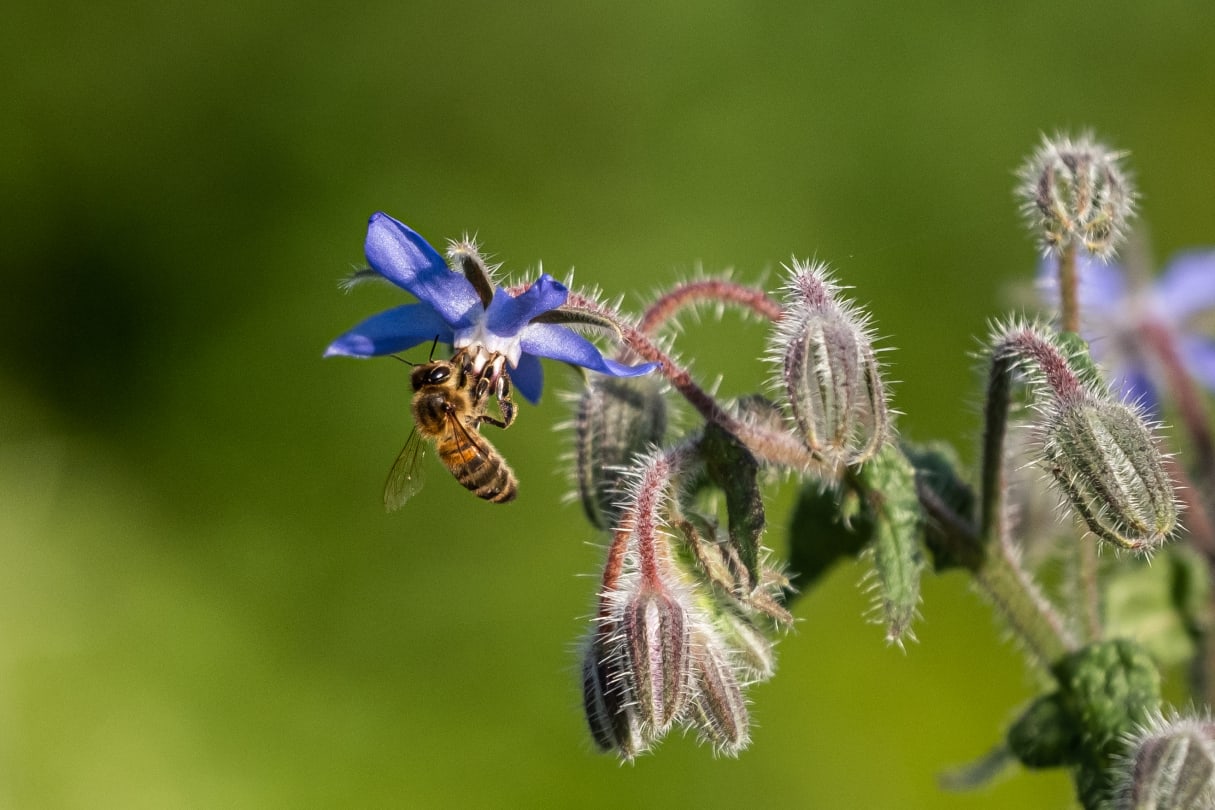Pollination

The reproduction by cross-pollination of many species depends on wild bees. With them, the survival of certain species of animals is also threatened (such as certain birds, butterflies, bumblebees...).
The bee collects pollen and nectar from the flower. Some of this nectar (which is located on the stamen) gets stuck to the bee's hairs during transport to another flower. When she lands on the other flower, this nectar is deposited on the stigma, or pistil (female reproductive organs). It is thanks to this that fertilization is possible, and that seeds can develop.
Unfortunately, the number of pollinators is decreasing more and more, especially in industrialized countries. And yet, there are 45% more hives worldwide in the last 50 years. But too many pesticides, plants rich in nectar that are becoming increasingly rare, especially in urban areas, and many other factors contribute to the decline of pollinator species year after year.
You can also find this photo on other platforms:
Add it to your faves on Flickr, like 110+ others
Like it on pixelfed, like 60+ others
